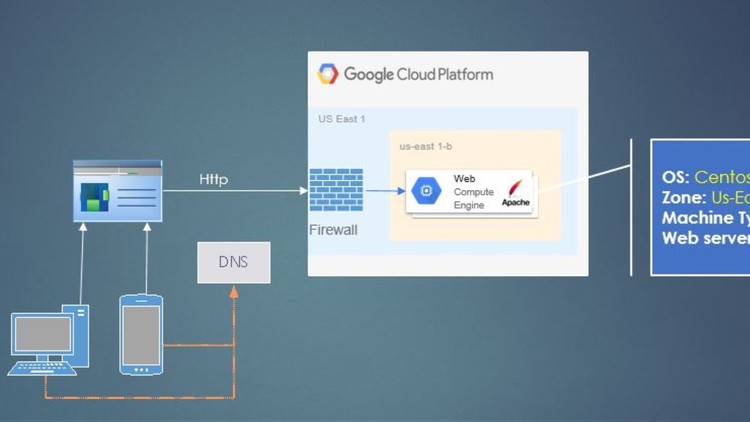
How to troubleshoot connectivity issues with your website running in the cloud environment
What you will learn
How to troublshoot website connectivity
English
Add-On Information:
Note➛ Make sure your 𝐔𝐝𝐞𝐦𝐲 cart has only this course you're going to enroll it now, Remove all other courses from the 𝐔𝐝𝐞𝐦𝐲 cart before Enrolling!
- Course Overview
- This comprehensive course, “Troubleshooting Website Connectivity in a Cloud Environment,” equips professionals with essential skills to diagnose and resolve intricate website connectivity issues inherent in modern cloud infrastructures.
- We delve into unique networking paradigms of public cloud providers, exploring how factors like Virtual Private Clouds (VPCs), security groups, load balancers, and Content Delivery Networks (CDNs) impact accessibility.
- You will learn to systematically identify root causes from DNS misconfigurations to firewall rules or routing anomalies, ensuring your web services remain robustly available and performant.
- This course guides you from initial problem detection through advanced diagnostic techniques, empowering seamless digital experiences in a distributed cloud landscape.
- Requirements / Prerequisites
- A foundational understanding of basic networking concepts, including TCP/IP, HTTP/HTTPS, and the OSI model.
- Familiarity with common command-line interfaces (CLI) and basic Linux/Unix shell commands.
- An introductory grasp of cloud computing concepts, such as IaaS, PaaS, and general cloud architecture.
- Experience with managing web servers (e.g., Apache, Nginx) or a basic understanding of their operation is beneficial.
- A desire to tackle challenging network puzzles in a dynamic cloud setting.
- Skills Covered / Tools Used
- Applying a systematic methodology to troubleshoot connectivity across various cloud layers.
- Utilizing network diagnostic tools like ping, traceroute, dig, nslookup, netstat, and ss for critical information gathering.
- Navigating and interpreting configurations within cloud provider consoles and CLIs (VPCs, security groups, network ACLs).
- Analyzing web server logs, cloud-specific logging services (e.g., CloudWatch, Azure Monitor), and browser developer tools.
- Diagnosing DNS resolution failures and optimizing DNS configurations for cloud-hosted applications.
- Identifying and rectifying misconfigurations in cloud firewalls, security groups, and network access control lists.
- Troubleshooting issues related to load balancers, CDNs, and API Gateway connectivity.
- Understanding and mitigating impacts of public/private IP addresses, routing tables, and peering connections.
- Benefits / Outcomes
- Significantly reduce website downtime by accurately and rapidly diagnosing cloud-related connectivity issues.
- Enhance your problem-solving capabilities, transforming you into a highly effective troubleshooter for complex distributed systems.
- Deepen your understanding of cloud networking architecture and security best practices.
- Increase the reliability and performance of web applications hosted in the cloud.
- Gain confidence in managing and optimizing cloud network configurations.
- Boost your career prospects in DevOps, Cloud Engineering, SRE, and IT administration roles.
- PROS
- Offers highly practical, scenario-based learning directly applicable to real-world cloud operational challenges.
- Focuses on a critical and in-demand skill set essential for maintaining high availability in cloud environments.
- Provides a systematic troubleshooting framework adaptable across various public cloud platforms.
- Empowers learners to proactively identify and resolve potential connectivity bottlenecks before impacting users.
- CONS
- Requires a dedicated mindset and a willingness to engage with complex network diagnostics and cloud infrastructure concepts.
language
Found It Free? Share It Fast!